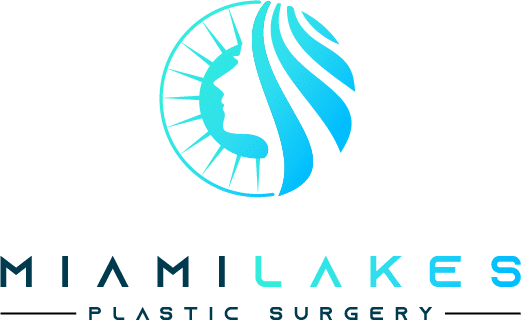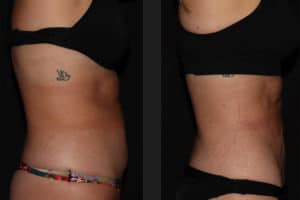How can I tighten my skin?
How can I tighten my skin? This has been one of the most popular questions asked by patients and plastic surgeons alike. The reason is that almost everyone could benefit from some skin tightening as they begin to age, and this question will be approached from a few different perspectives, beginning with: how does the skin tightening work? Where can we use these techniques and procedures for skin tightening? Can we combine these skin-tightening procedures with other things? How much does the skin tightening tend to cost? Is it safe? Can I do it myself at home?
The underlying problem is that as we age our skin loses elasticity because collagen and elastin and other compounds in our skin begin to break down and lose their strength so our skin becomes stretchy over time and it can’t withstand gravity as effectively.
There are 3 categories of things that people try to do to tighten their skin: creams and other topical treatments, devices, and technologies of different kinds, and then finally surgery.
There are the creams, and the theory behind skin tightening creams is that by applying specific chemicals or molecules or proteins to the skin through skin creams, we can have various effects on tightening the skin. Maybe it tends to add collagen of the skin or to make elastin tighter again. There are as many theories and approaches as there are brands of skin creams themselves.
Creams as a whole are not very effective in terms of skin tightening and the analogy is a falling wooden house. If you see a wooden house collapsing it is not going to do a lot of good to throw wood on that collapsing house. Essentially that is what a lot of the skin creams are doing. They are throwing collagen or elastin or other proteins and things at the skin while it is losing its elasticity, and if the body is unable to properly metabolize those things and use them as it rebuilds its skin and connective tissues, those ingredients in those skin creams are not going to do a lot of good. One exception to this rule is our skin creams that are primarily aimed at moisturizing the skin. The reason for this is that your skin can very effectively take in topical moisture in the right formulation and when you moisten the skin you are providing a temporary increase in volume and turgor and this can improve the face’s appearance, and it can make things look less loose or saggy.
The underlying theme for devices that tend to work well for skin tightening is that they create a controlled injury and in healing that injury the skin tightens and contracts. That makes sense from a scientific perspective because one of the main ways your body heals injuries is through wound contraction. If you get a cut on your arm and you watch it over time it’s going to shrink. And this is going to help the body because it gives it less of an area that I need to cover with new tissue. The idea with the skin tightening devices is to create a controlled injury that will evoke a tightening and shrinking response in the skin which in turn leads to a more youthful, pleasing appearance. The class of devices that have offered the best results for skin tightening and even for skin resurfacing are the radio frequency devices. These come in 2 flavors. The first is a completely external noninvasive device and is pretty unique in the sense that it uses radiofrequency micro-needling to create 2 different kinds of controlled injury. It deploys a series of extremely small needles to a depth of 4 millimeters in the skin, and these are creating a controlled physical injury in the form of these microscopic little holes in the skin, and at the same time, the devices emitting radiofrequency energy which favors the healing process, and together these holes and the thermal injury from the radiofrequency energy triggers a robust healing response, that over time the skin responds to by shrinking and tightening.
The most widely used minimally invasive kind of skin tightening device using radiofrequency is called Bodytite. This is a bipolar radiofrequency device. There are two poles or sites from which radio frequencies emitted there’s one pole that goes underneath the skin and one pole that stays on top of the skin and radiofrequency energy is essentially fired between the two poles to heat the skin, and there is a heat-sensing device both on the internal pole and on the external pole. This heat is very precisely regulated so things are kept safe, but it gets hot enough to get the temperatures at which is known the skin contraction will be induced. The way this device works mechanically is that a tiny incision is made, it can be as small as two millimeters and that internal probe is passed under the skin while the external probe follows on top.
The other successful strategy has been combining external radiofrequency energy with this Bodytite form of radiofrequency energy that passes from inside to outside the body and back again. This is a nice kind of cumulative synergistic effect to achieve very powerful skin tightening.
The other forms that these bipolar radiofrequency devices can take are called FaceTite and AccuTite. These are essentially smaller sizes of that original Bodytite handpiece. The FaceTite is kind of that medium size and it is great for the lower third of the face and the neck, whereas the AccuTite handpiece is tiny, and this can be used for areas as delicate and small as the upper and lower eyelids and the nasolabial folds. There’s a lot of flexibility with these devices that allow achieving some stunning results.
The things patients know about any of the skin tightening devices though is that it does take time to see the results because we are relying on a controlled injury to heal to produce the skin tightening, and that is not an instant process. While patients can see a small improvement right away, really does take several months to see the final result from these procedures. The other nice thing about these procedures that they can be performed on an outpatient basis and they generally don’t take over an hour. Patients can come in, have it done, and then head home without much of a fuss.
The gold standard for getting extreme skin tightening a would be surgical skin removal, and for the face or neck, that is, a facelift and neck lift; for the arms, it is an arm lift or Brachioplasty, and for the thighs, it would be thigh lift; and for the abdomen, it would be an abdominoplasty or tummy tuck.
A lot of people are reporting that with these minimally invasive devices we can often get about 30 percent or so of the results that we would see with a truly surgical procedure. For someone who wants to avoid surgery either from a downtime perspective or cost perspective or maybe they’re just not as medically prepared to have a real invasive surgery, these minimally and non-invasive options can be great.
These techniques and technologies can be combined to help get excellent results. The first one is liposuction. In a lot of cases, especially for things like dealing with double chins, the area behind the chin. Going down to the neck, surgeons can contour that area usually by doing a little bit of micro-focused and targeted liposuction at the same time as some of the skin tightening modalities and the same thing goes for the abdomen, the arms and the legs, and a lot of other areas they can tighten the skin all they want but if there’s a lot of extra fat in the area they’re not going to get the contour that doctors want. That is when it is time to do a little bit of liposuction along with the skin tightening.
The other thing that is very frequently combined with skin tightening procedures is P. R. P. or platelet-rich plasma. The theory behind P. R. P. is that it can enhance the healing of these controlled injuries that are created with these radiofrequency or physical controlled injury creating devices. Platelets are the first kind of blood cell to respond when you get some kind of injury and their job is essentially to message the rest of the body and say “send in the reinforcements, we’ve got a problem, we need to heal this injury” so they’re bringing in all kinds of growth factors and other proteins that are going to cause blood vessels to grow and other healing molecules and proteins to be activated to start treating that wound. What platelet-rich plasma does is it concentrates those platelets and allows specialists to directly place them into the area that surgeons created a controlled injury to amp up that healing process. This is a customized treatment made individually for each patient. Doctors withdraw their blood, spin it down in a device called a centrifuge, and concentrate the platelets into a form that they can either inject or place topically over the area depending on what they’re trying to achieve to ramp up the skin tightening and resurfacing effects of the skin tightening procedures that they are performing.
The more invasive as skin tightening procedure is, the more expensive it’s going to be.
The radiofrequency micro-needling treatments are in general available from 1000 to $1500 per treatment. Patients should have 3 of these treatments to get the optimal result and that is also going to vary with the size of the area that is being treated because it takes more time to treat a larger area.
Moving into the slightly more invasive devices like BodyTite, AccuTite, and FaceTite, these are one time procedures and they’re generally going to be in the range from 3 to 5 or $6000, depending on the size of the treatment area and the complexity of the procedure that’s necessary.
Then, other factors are going to determine price independently, and those are things are like where in the country are you, are you in a relatively expensive area or less expensive area, and what are the qualifications and reputation of your surgeon, and all these things are going to contribute but hopefully that’ll give you some guidelines when you start to look into these things.
Is skin tightening safe? Like almost any procedure in plastic surgery or cosmetic medicine, it is safe if it’s done the right way by an experienced provider. However, like any medical procedure, there are possible risks like infections or bleeding problems or damage to nerves in the area. These are all things patients should discuss specifically with their provider before they have one of these procedures.
One of the most common questions about skin is: How can I do skin tightening at home? There are all kinds of systems and creams and even devices being sold but the bottom line is that none of these home skin tightening devices and creams are going to work effectively, and it’s probably more cost-effective to go and speak to an expert or a board-certified plastic surgeon or board-certified dermatologist and you’ll come up with a great plan that may even be less expensive than spending a lot of money on very expensive home systems that you are going to keep trying over and over again and try different ones and use them in different ways to try to get a result.





